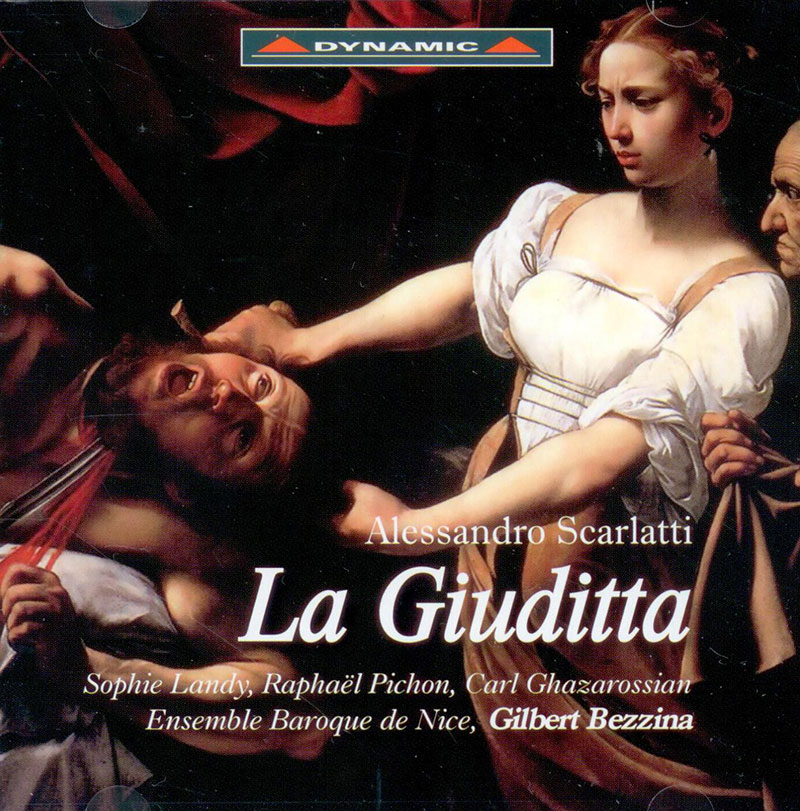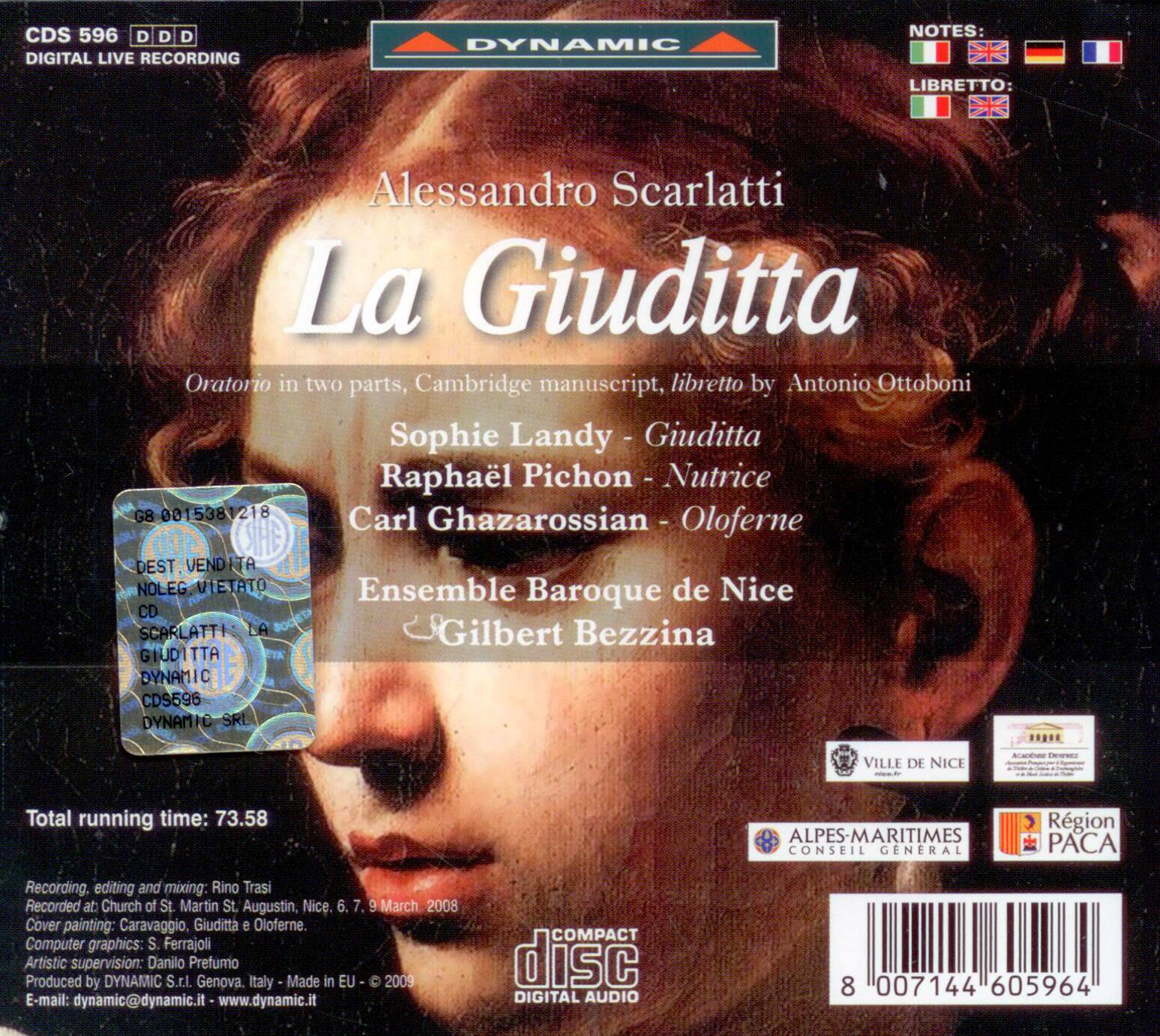Logowanie
Mikołaj - ten to ma gest!
Elton John, The Mamas & The Papas, Cat Stevens, Rod Stewart, Bobbie Gentry, Stevie Wonder, Engelbert Humperdinck
Memory Lane
Edycja Numerowana - 1000 egzemplarzy w skali światowej
RACHMANINOV, Eiji Oue, Minnesota Orchestra
Symphonic Dances / Vocalise
Best Recordings of 2001!!! NAJCZĘŚCIEJ KUPOWANA PŁYTA Z RR!
Karnawał czas zacząć!
Music of Love - Hi-Fi Latin Rhythms
Samba : Music of Celebration
AUDIOPHILE 24BIT RECORDING AND MASTERING
CHOPIN, LISZT, DEBUSSY, DVORAK, Gerhard Oppitz
Dances romantiques - A fantastic Notturno
Wzorcowa jakość audiofilska z Clearaudio
Winylowy niezbędnik
ClearAudio
Double Matrix Professional - Sonic
najbardziej inteligentna i skuteczna pralka do płyt winylowych wszelkiego typu - całkowicie automatyczna
SCARLATTI, Sophie Landy, Raphael Pichon, Ensemble Baroque of Nice, Gilbert Bezzina
La Giuditta

- Sophie Landy - soprano
- Raphael Pichon - tenor
- Ensemble Baroque of Nice - orchestra
- Gilbert Bezzina - conductor
- SCARLATTI
"The name of Alessandro Scarlatti (1660-1725) is linked to the history of the Italian baroque oratorio no less than to opera and cantatas. In the field of the oratorio he firstly followed the flourishing tradition of Rome and then outlined a formal model of expression that was to be widely used in the works of the composers of the younger generations. Born in Palermo in 1660, Scarlatti first approached the oratorio in Italian in 1683, with Agar et Ismaele esiliati, on a text by Giuseppe Domenico de Totis. In this work the distinction between recitative and aria seems to be made definitively systematic, whilst the figure of the historian, a characteristic feature of Latin oratorio, is abolished. In1684 in Naples Scarlatti took up the post of director of the Royal Cappella, and left aside the composition of oratorios for a while. He did not return to the oratorio until 1693 when he set two works on Italian texts: I dolori di Maria sempre Vergine, performed at San Luigi’s in Palazzo and La Giuditta, an oratorio for five voices and instruments, on a libretto by cardinal Pietro Ottoboni. Some years later, in March 1697, Scarlatti returned to the story of Judith and Holofernes to set a new libretto, this time written by Antonio, the father of the cardinal Pietro Ottoboni. This second Giuditta, of which we know neither where it was first performed nor why it was created, was written for three voices, strings and basso continuo and is known today as the ”Cambridge” Giuditta, (as its manuscript is conserved in the Rowe Music Library of King’s College, Cambridge). This indeed is the work recorded on our CD. Three characters appear in this composition: Giuditta (soprano), the Nurse (contralto) and Holofernes (tenor). The Nurse has a musical role wholly equal to those of the other two characters, and indeed some of the most important parts of the score are written for her. The writing is always very flexible, with rather short recitatives and extremely concise, functional arias, often of virtuoso nature The conception and idiom of the oratorio are strongly influenced by the simplification of style typical of the closing decades of the seventeenth century. Thus whilst the frequent use of instrumental ritornellos looks towards an eminently seventeenth century mode of composition, the brief three-part symphony that opens the composition and the use of dance rhythms, for example in Giuditta’s aria Non ti curo, o libertà - to all effects a minuet - , clearly reflect the composer’s openness towards new musical experiences and offer a foretaste of the expressive mood of the new century. Strong Points and Reviews: Gilbert Bezzina conducts three singers specialised in baroque music and the Ensemble Baroque de Nice, which celebrated 25 years’ activity in 2007. Since its foundation the orchestra, made up of 12 stable members using original period instruments, has rapidly made a name for itself as one of the finest French groups specialising in baroque music. Under the direction of Gilbert Bezzina, precursor of the revival of the baroque violin, the Ensemble has dedicated itself to research and the study of the performance of the repertoire of the seventeenth and eighteenth centuries. This has led to the rediscovery of forgotten, unpublished baroque masterpieces ”What richness and sophistication in this almost Arcadian work (...) The Ensemble Baroque de Nice and conductor Gilbert Bezzina underline its melodic opulence, let recitatives breathe (...)” Olivier Rouvière - Diapason, May 2008 ”The essential elements are all there: the perfect performance of the Ensemble Baroque de Nice and of their conductor; (...) the singing of Sophie Landy, soprano endowed with a clear and poetic voice, who interprets a touching Giuditta...” Jean Gallois - Opéra Magazine, May 2008"





























